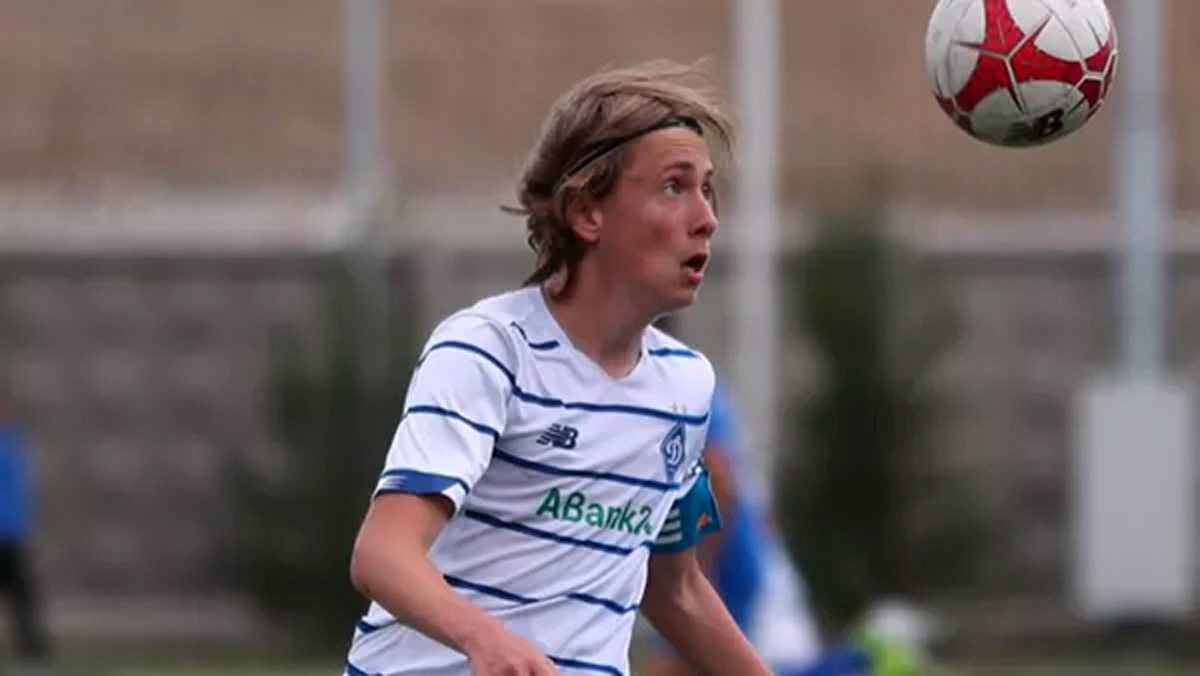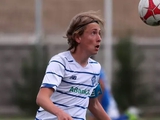Unfortunately, the war had a serious impact on the gene pool of Ukrainian football. A large number of young players found themselves in Europe as refugees. Most of them want to plan their careers there. Perhaps this will eventually benefit the youth teams, the youth national team and the national team. Now in 2007 there is a huge number of legionnaires. In fact, it is impossible to find them all. But for club football, this is a loss of assets.
 Alexander Dragan. Photo - fcdynamo.com
Alexander Dragan. Photo - fcdynamo.comWhile Dynamo Kyiv managed to save the year 2006, the situation was not so good after that. In 2007, we lost a lot of players - Varivoda, Lytvyn, Petrenko, Popov, Dragan. At least we got Ilchenko back. Oleksandr recently signed his first contract with Atalanta for three years.
The Dragan family has three children. That's why they ended up in Italy after the war started. There were several Ukrainians at Atalanta, but only the former Dynamo player remained. As far as I know, Ruslan Malinowski actively took care of young Ukrainians. He helped them with their everyday life, financially. Of all of them, only Dragan stayed in Bergamo. There were three other players from Shakhtar.
Sashko is now 16 years old. I saw him in the Ukrainian national team of his age at a development tournament in Bratislava. I can't say that he stood out in any way. The boy has potential.
Alex Velikykh, a Ukrainian scout in Italy who works in the youth sector, knows more about Dragan.
- How is Dragan's talent assessed in Italy?
- In Italy, the midfield position is one of the most difficult. Because there are a lot of tactics. Dragan was able to pleasantly surprise with his creativity.
The footballer showed not the physical qualities that are inherent in players from Eastern and Southern Europe and Italy, but high thinking on the field, good technical characteristics, and good work with the ball.
The first impression was creative and positive. Then questions arose as to whether he could maintain this state of fitness and creativity throughout the intensity of the annual cycle. In other words, he lacks stability.
- What are his strengths and weaknesses?
- He is a creative player who can create an episode in favour of the attack. He can make a fine pass, play outside the box, show individual skill. But will he be able to sustain such a creative dynamic while gaining muscle mass in the transition to adult football? Now this is the main question of his talent.
- Which position is closer to him?
- More like number ten. This is the best expression of his quality. He can get used to number eight. Because now in Italy there are virtually no pronounced attacking midfielders. Attacking players play deeper.
- How well does he fit the style of Italian football?
- It's very strange that he suited Atalanta." To be honest, I had some doubts. I won't say he fits Italian football. He didn't fit Atalanta's style. This is a player of Sassuolo, Empoli, maybe Roma's style."
Perhaps against the background of other players who were not so creative. Perhaps the absence of such a player in his position played a role in making the club interested.
- What does the Atalanta Academy look like?
- The Bergamaschi are in the midst of a management change after the arrival of new American owners. There is a change in the approach to scouting and the formation of youth teams.
"Atalanta wants to develop in the direction of "coach-manager". The head of scouting is Marta. His departure is different from what has been laid down historically. Not watching players live, but trusting numbers and analytics.
Over the past two years, the quality of the Academy has slipped. The U-19 youth team was in the relegation zone for a long time, but in the second round they barely escaped relegation.
Previously, the U-19 was a platform for selling players (Dejan Kolusevski joined Juventus for 30 million, Adama Diallo to MU for 21). Now they want to develop players for the first team. Defender Giorgio Scalvini is the first swallow in this direction. "Atalanta wants to build on its own school
- How do you assess Dragan's chances of playing in Serie A and reaching the first team?
- It's too early to talk about it now. At least in 2 years we can talk about some kind of prospect of adult football. There is no doubt that he has talent. Now a lot will depend on character, health and psychology.
- Can you compare Sashko to Malinowski?
- No. They are different players. What they have in common is the middle of the pitch, maybe anthropometry. Dragan is more creative, able to sharpen up out of the blue, decide the moment, give the last pass, act in a limited space. Malinowski makes the geometry of passes on the pitch.
- Is a three-year contract a recognition of talent?
- This is my first professional contract. According to the law, it must be for at least three years. But the fact that he was offered a professional contract shows that the club is counting on him. Dragan can not only reach the first team, but also become an asset.
- Last season, what age team did he play for?
- More like U-16. This is not a specialised age group for Italian football. Players who are not up to the U-17 level play for this age. Even if they are younger.
In Italy, players who are not up to U-17 play for the U-16. The initial period of adaptation was successful. There were certain moments in the middle of the championship. If we managed to sign a professional contract, then these problems have been solved.
- Is Dragan a loss for the Dynamo Academy?
- Of course, yes. This is if we are talking about the club. If we are talking about the situation in Ukraine, opportunities for young players, the future of the Ukrainian national team, then this can be a gain for the player and the national team.
- Did a lot of Dynamo players end up in Italy after the war started?
- Yes. Especially younger players. They impressed the local academies. Dynamo's players differ in a positive way from the pupils of other Ukrainian clubs who came to Italy. Thanks to better training and selection. These two areas are at a good level in the Dynamo school. The selectors understand the potential of the players and know the modern requirements.
- Can you single out any former Dynamo players?
- David Lebed in 2012 with Protsenko and Ilya Protsenko in 2013 with Fiorentina. According to the test results, Protsenko is the first in terms of speed and coordination.
- Andrii, the son of former Dynamo player Vitalii Lysytskyi, also plays for Fiorentina. How is he doing?
- His anthropometry meets the requirements of Italian football. He is a physically developed footballer. Andrii is gaining practice as a central defender. He is not responsible for dispatching functions, but only destruction. He has a strong character, which leads to a large number of cards. He was a member of the starting line-up in 2008. If he improves his technical abilities and defensive skills, he can grow into a good footballer thanks to his athleticism.
Serhii Tyshchenko











